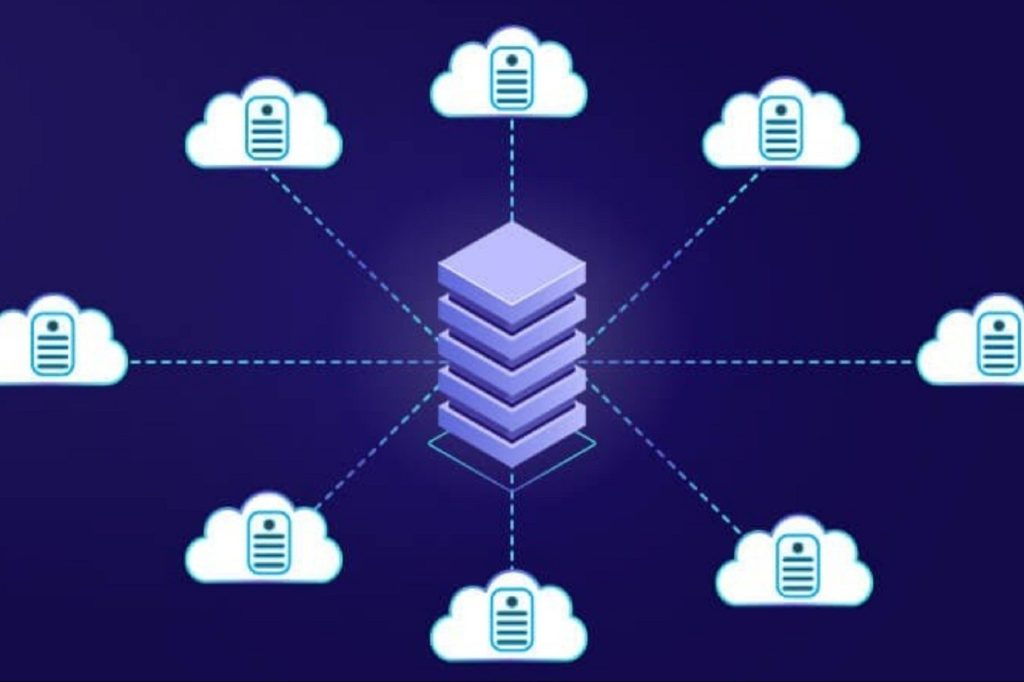Blockchain technology has gained significant attention in recent years due to its potential to revolutionize various industries. One such application is the use of blockchain in creating decentralized cloud storage systems. In this article, we will explore the concept of decentralized storage, understand the underlying technology of blockchain, and discuss how these two components merge to form a secure and efficient storage solution.
Introduction
In today’s digital age, the need for secure and reliable data storage has become paramount. Traditional cloud storage solutions, while convenient, come with limitations such as centralization, vulnerability to data breaches, and reliance on third-party providers. These concerns have led to the emergence of decentralized cloud storage systems that leverage blockchain technology to address these shortcomings effectively.
Understanding Blockchain Technology
To comprehend the role of blockchain in decentralized storage, it is essential to grasp the fundamentals of blockchain technology itself. Blockchain is a distributed ledger technology that allows multiple parties to maintain a shared database without the need for intermediaries. It achieves this through decentralization, immutability, and consensus mechanisms.
Decentralization ensures that no single entity has control over the entire network. Instead, the data is distributed across multiple nodes or computers, making it highly resistant to tampering or single points of failure. Immutability ensures that once data is recorded on the blockchain, it cannot be altered or deleted, providing a high level of data integrity. Consensus mechanisms, such as Proof of Work or Proof of Stake, enable the network to agree on the state of the database and validate transactions.
Decentralized Cloud Storage Systems

Traditional cloud storage relies on a centralized architecture where data is stored on servers owned and controlled by a single entity. While this model offers convenience, it poses risks such as data breaches, server failures, and vendor lock-in. Decentralized cloud storage systems, on the other hand, distribute data across a network of participants, removing the need for a central authority.
Decentralized storage systems leverage peer-to-peer networks and blockchain technology to enable users to store and retrieve data securely. Instead of relying on a single server or data center, the files are divided into smaller encrypted pieces and distributed across multiple nodes in the network. This approach ensures data redundancy, as well as increased privacy and security.
Blockchain-Based Decentralized Cloud Storage
The integration of blockchain technology into decentralized cloud storage brings numerous advantages. Let’s explore how blockchain enables decentralization in storage, the role of smart contracts in data ownership, and the enhancements in data redundancy and security.
Blockchain technology acts as the underlying infrastructure for decentralized cloud storage systems. It ensures that data is distributed across a network of nodes, eliminating the reliance on a central authority. Through consensus mechanisms like Proof of Work or Proof of Stake, the network validates and secures the data, making it resistant to unauthorized modifications or tampering.
Smart contracts, which are self-executing agreements built on blockchain, play a crucial role in data ownership within decentralized storage systems. These contracts define the rules and conditions under which the data can be accessed or shared. Users can have complete control over their data by defining who can access it, for how long, and under what circumstances. This decentralized approach to data ownership eliminates the need for intermediaries, giving users greater autonomy and privacy.
One of the key advantages of blockchain-based decentralized storage is the enhancement of data redundancy and security. Traditional cloud storage relies on centralized servers, making them vulnerable to failures, cyberattacks, or data loss. In decentralized storage, files are broken down into smaller encrypted pieces, which are then distributed across multiple nodes in the network. This redundancy ensures that even if some nodes go offline or experience issues, the data remains accessible and intact.
Moreover, the use of cryptographic algorithms and decentralized networks significantly improves data security. Each piece of data is encrypted, and only the owner holds the private keys to access and decrypt the information. This encryption, coupled with the immutability of blockchain, provides a robust layer of protection against unauthorized access or data breaches.
Key Players and Projects
Several prominent projects have emerged in the realm of blockchain-based decentralized cloud storage. These projects aim to disrupt the traditional centralized storage model and provide users with secure, reliable, and cost-effective storage solutions.
One such project is Filecoin, a decentralized storage network that allows users to rent out their unused storage space and earn cryptocurrency in return. Filecoin utilizes blockchain technology and a unique consensus mechanism called Proof of Spacetime to ensure data integrity and incentivize participants to contribute their storage resources.
Another notable project is Storj, which leverages a peer-to-peer network and blockchain technology to create a decentralized cloud storage platform. Storj enables users to rent out their storage space and, in turn, allows others to store their data securely across multiple nodes. This distributed approach to storage eliminates the need for centralized data centers and offers enhanced privacy and security.
Benefits of Blockchain in Decentralized Storage
- Enhanced Data Privacy and Control: Explain how blockchain-based decentralized storage systems provide users with increased data privacy and control. Discuss features such as data encryption, user-defined access controls, and the elimination of intermediaries, which empower individuals and businesses to maintain ownership and control over their data.
- Improved Reliability and Availability: Highlight how decentralized storage systems leverage the distributed nature of blockchain to enhance reliability and availability. Discuss the concept of data redundancy across multiple nodes, which ensures that even if some nodes go offline or experience issues, the data remains accessible. Emphasize the resilience and fault tolerance of decentralized storage.
- Cost-effectiveness: Explain how decentralized storage can be more cost-effective compared to traditional cloud storage solutions. Discuss how idle storage resources of network participants can be utilized, reducing the need for dedicated data centers and lowering infrastructure costs. Explain that decentralized storage eliminates the need for expensive third-party providers, resulting in more affordable storage options for individuals and businesses.
- Scalability: Highlight the scalability advantages of blockchain-based decentralized storage systems. Explain how storage capacity can scale organically as the network grows, accommodating the increasing demand for storage resources without experiencing capacity constraints. Discuss the potential for seamless scaling without compromising performance.
- Data Integrity and Security: Emphasize the immutability and security features provided by blockchain technology. Explain how each piece of data is encrypted and stored securely on the blockchain, making it highly resistant to unauthorized access, tampering, or data breaches. Discuss the use of cryptographic algorithms and the transparent and auditable nature of the blockchain, which enhances data integrity and trust.
- Flexibility and Interoperability: Discuss how blockchain-based decentralized storage systems can offer flexibility and interoperability. Explain that users are not tied to a specific provider or platform and can access their data from anywhere, using various devices or applications. Highlight the potential for seamless integration with existing systems and applications, allowing for a smooth transition to decentralized storage.
Challenges and Limitations
- Education and Awareness: Create educational content and materials to raise awareness about decentralized storage among users. Explain the benefits, such as increased security and privacy, data ownership, and resilience against data breaches. Showcase real-life examples and success stories to illustrate the advantages of decentralized storage.
- User-Friendly Interfaces: Develop intuitive and user-friendly interfaces for decentralized storage platforms. Streamline the user experience by simplifying the process of storing and retrieving data. Provide clear instructions, tooltips, and guidance to help users navigate the platform effortlessly.
- Data Migration Support: Offer seamless data migration services to make it easier for users to transition from traditional cloud storage to decentralized solutions. Provide tools or assistance for transferring data from centralized platforms to decentralized storage, ensuring a smooth and hassle-free experience.
- Integration with Existing Services: Enable integration with popular applications and services to enhance user convenience. Provide plugins or APIs that allow users to seamlessly integrate decentralized storage into their existing workflows or applications, minimizing disruption and simplifying adoption.
- Data Accessibility and Sharing: Address concerns regarding data accessibility and sharing. Highlight features that allow users to easily access and share their data securely with others, emphasizing the control and flexibility offered by decentralized storage platforms.
- Community Engagement: Foster an active and supportive community around decentralized storage. Encourage user feedback, address concerns promptly, and provide channels for users to seek assistance and share their experiences. Building a community creates a sense of belonging and trust, increasing user confidence in adopting decentralized storage solutions.
- Partnerships and Collaborations: Collaborate with other industry players, organizations, or businesses that can benefit from decentralized storage. Partner with developers, content creators, or enterprise clients to showcase use cases and demonstrate the value of decentralized storage in specific contexts.
- Compliance and Data Protection: Ensure that decentralized storage platforms comply with relevant data protection and privacy regulations. Establish robust security measures, encryption standards, and data handling practices to assure users that their data is secure and handled responsibly. Transparency regarding compliance measures can build trust and encourage adoption.
Conclusion
In conclusion, the use of blockchain in creating decentralized cloud storage systems offers a compelling solution to the limitations of traditional centralized storage. Through the use of blockchain technology, data can be distributed across a network of nodes, providing increased security, privacy, and reliability. Blockchain enables users to have greater control over their data through smart contracts, and it enhances data redundancy to prevent loss or unauthorized access.
While challenges such as scalability, regulatory compliance, and user adoption exist, the future outlook for blockchain-based decentralized storage is promising. Industries that prioritize data privacy and security are likely to adopt this technology, and advancements in scalability solutions will further propel the widespread adoption of decentralized storage systems.











